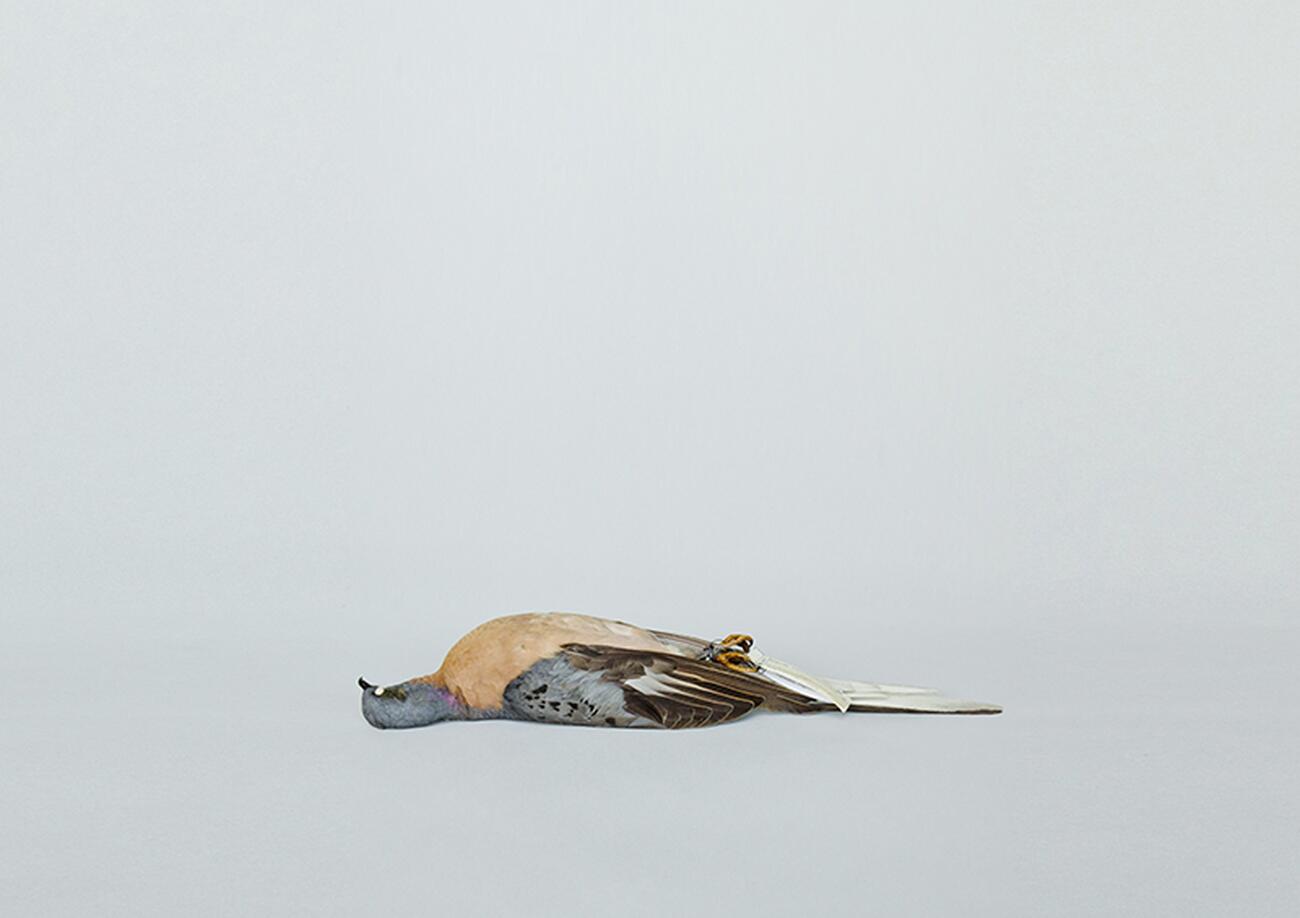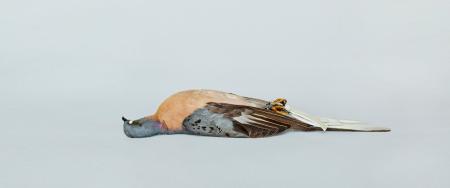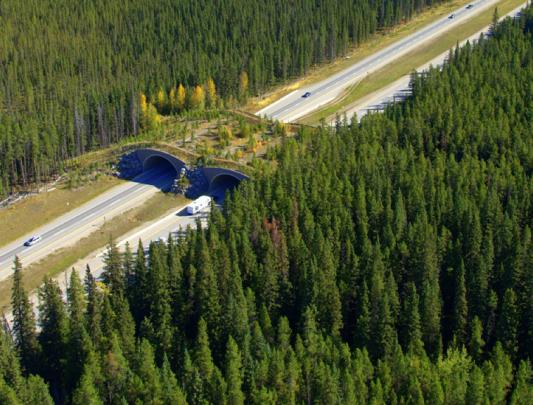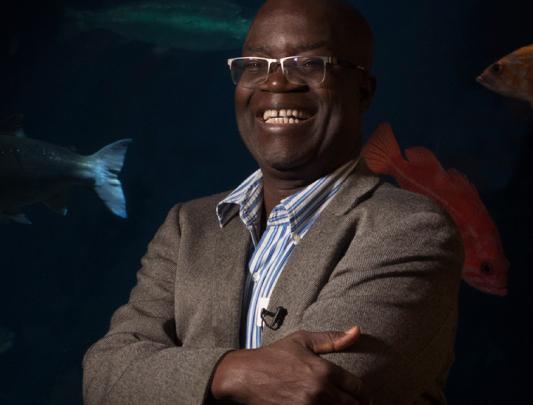
(Photo: Ada Sin)
Nature in Freefall
One million plant and animal species are at risk of extinction. For the sake of future generations, how can we conserve Earth’s biodiversity?
Passenger pigeon
Ectopistes migratorius
Cowan Tetrapod Collection No. B002440
Beaty Biodiversity Museum
The passenger pigeon once numbered in the low billions, accounting for about a quarter of all birds in North America. Up until the late 1800s, people viewed them as a never-ending resource. They were hunted for food, for feathers used in mattresses, and for agricultural fertilizer. People also hunted them purely for sport, in some cases catching them for live trap shooting. In one hunt in Michigan, 50,000 passenger pigeons were killed each day for five months straight.
Finally, in the 1890s, some people realized that humans might be causing the unthinkable: the elimination of the most abundant bird species in North America. Laws were passed to protect it, but it was too late. Numbers of passenger pigeons continued to decline, due in part to the destruction of their nesting habitat as well as their numbers passing below the needed density for communal breeding.
Long after they were extinct in the wild, the last captive passenger pigeon, a female named Martha, died of old age at 1:00 PM on September 1, 1914, in the Cincinnati Zoo. This moment marked a remarkable milestone for humanity: as an early case in which the exact date of a human-caused extinction is known, it showed our actions can have extreme consequences, forever altering fundamental characteristics of the natural environment.
– Darren Irwin, UBC professor of zoology and former director of the Beaty Biodiversity Museum



































